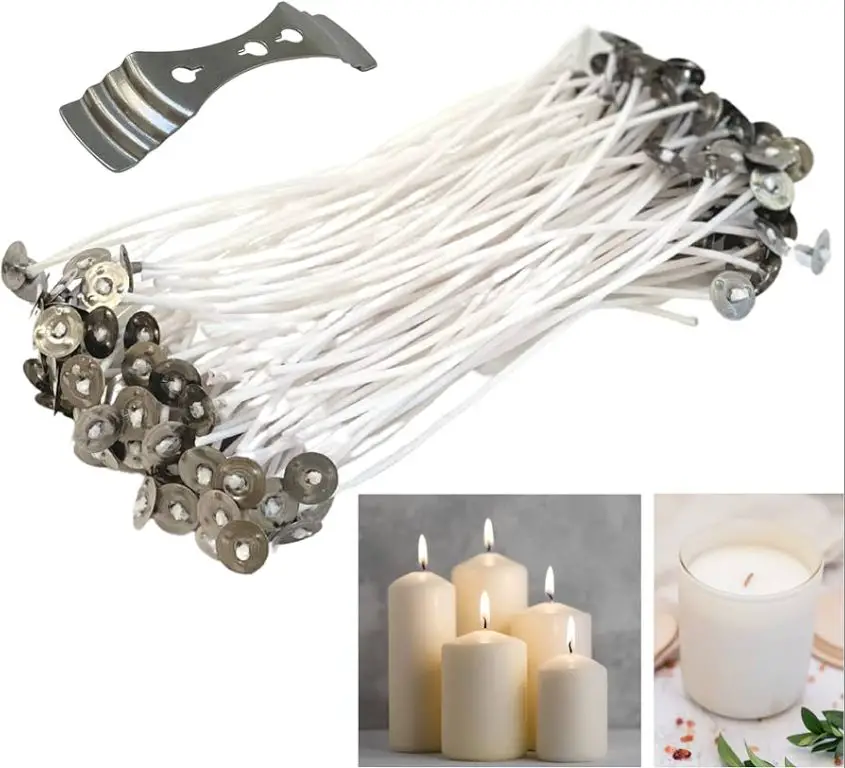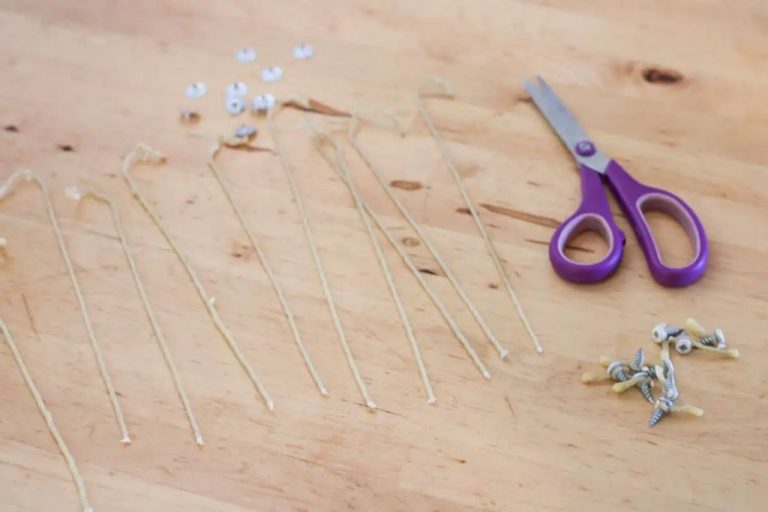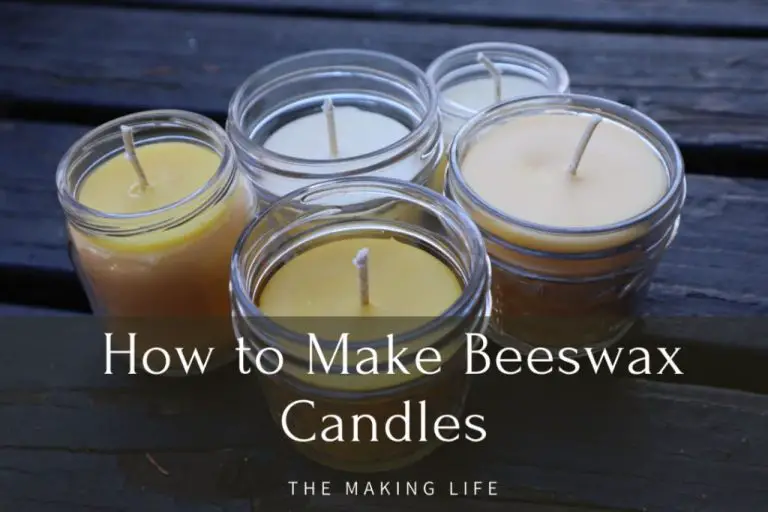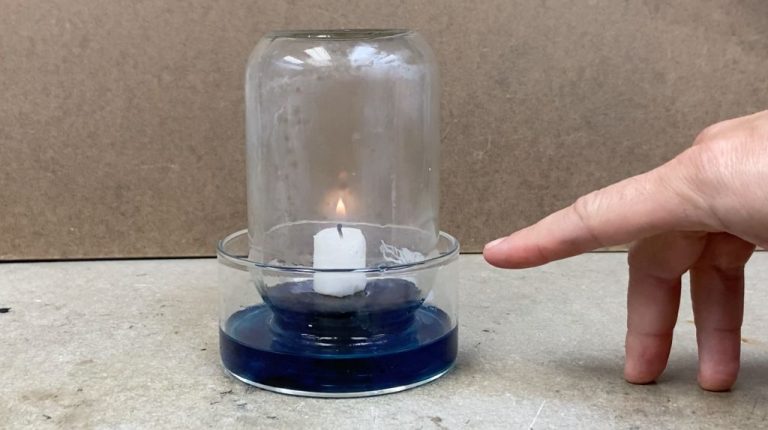What Is The Safest Wick?
Candle wicks are an essential part of candles. They are the string inside the wax that serve as the source of ignition to light the candle. When lit, the wick burns and melts the wax around it in a controlled manner, allowing the candle to emit light and fragrance.
With safety being a top concern for many candle users, evaluating the relative safety of different wick materials is important. This article will examine the most common wick types, their composition, pros and cons, and safety considerations, with the goal of determining the overall safest wick material for candles.
Wick Materials
The most common materials used for candle wicks include cotton, wood, paper, and zinc core. Each material has its own properties and benefits for candle making.
Cotton is one of the most widely used wick materials. Cotton wicks are versatile and work well for container candles, pillars, votives, and other candle styles. Cotton burns cleanly and provides a bright flame (Elements of a Candle: Wicks).

Wooden wicks are another popular choice, made from wood chips or bamboo. They produce a crackling sound as they burn. Wood wicks are commonly used in soy candles and eco-friendly candles (https://practicalselfreliance.com/candle-wicks/).
Paper core wicks contain a braided cotton exterior with a paper core. They are excellent for votives, tea lights, and molded candles. Paper burns away completely leaving no ashes behind (How to Choose a Candle Wick).
Zinc or tin core wicks provide an extremely stiff central core that maintains an upright wick as the candle burns. Zinc core wicks work well for jar candles, pillars, votives, and devotional lights (Elements of a Candle: Wicks).
Lead Core Wicks
Lead core wicks are made with a lead alloy at the center that is encased by a cotton or paper wrapping. The lead allows the wick to bend as the candle burns down, helping maintain an upright flame shape. However, these wicks have been shown to emit lead into the air as the candle burns, posing a health risk.
According to the U.S. Consumer Product Safety Commission, burning a candle with a lead-cored wick can result in high levels of lead in the air: “CPSC Bans Candles With Lead-Cored Wicks”. The CPSC found that under some circumstances, burning a lead-cored candle can generate up to 1.2 micrograms of lead per cubic meter of air. At this level, after just 2-3 hours of exposure, airborne lead levels could exceed the U.S. EPA’s National Ambient Air Quality Standard for lead.
Lead exposure is linked to a variety of health problems, especially in young children. Effects of lead exposure include learning disabilities, developmental delays, and lowered IQ. In 2003, the CPSC implemented a mandatory ban prohibiting the manufacture or sale of candles with lead wicks in the United States to eliminate this potential source of lead exposure “Metal-Cored Candlewicks Containing Lead and Candles With Such Wicks”.

Zinc Core Wicks
Zinc core wicks were introduced as a lead-free alternative to lead-core wicks. According to a study by the National Institutes of Health, zinc wicks do not emit toxic fumes and are considered safer than lead wicks (https://pubmed.ncbi.nlm.nih.gov/10811249/). The key benefit of zinc wicks is that they do not contain any lead, eliminating exposure risks. Zinc is also less expensive than other lead-free alternatives like tin.
However, there are some potential downsides to zinc wicks. While zinc itself is not toxic, some zinc oxide particles emitted from the wick may be respirable and pose inhalation risks, especially for those with respiratory conditions according to the U.S. Consumer Product Safety Commission (https://www.cpsc.gov/s3fs-public/pdfs/foia_canwick2.pdf). The flickering nature of zinc wick flames may also be less attractive aesthetically. Proper wick trimming helps maximize zinc wick safety and performance.
Cotton Wicks
Cotton is one of the most common and popular natural fiber wicks used in candle making. As a plant-based material, cotton offers a sustainable and eco-friendly wick option. According to the SoY Delicious Candle Company, “Our exclusive blend of soy, coconut, and hemp waxes is safe for both the environment and your skin. You can use the melted wax from a Soy Delicious candle as massage oil – something you definitely can’t do with a petroleum-based candle.”

Cotton’s natural fibers provide excellent capillary action to draw wax up the wick while burning. This helps ensure full wax saturation for a consistent flame. Cotton also has good flexibility to resist clogging while bending freely as it burns down. Compared to rigid wooden or paper wicks, flexible cotton tends to have fewer snuffing or drowning issues.
When lit, cotton emits minimal smoke and odor. The natural fibers form a soft ash as they burn, which is gentle on the wax pool compared to some synthetic wick materials. According to Wicked Warlock Candle Making Supplies, “Cotton wicks are safe to burn, but do give off some smoke once they’ve burned a while. This means you will want to keep an eye out for the black ball of ash on the end of the wick.” With proper wick sizing and trimming, cotton wick smoke remains minimal.
Wooden Wicks
Wooden wicks are made from natural wooden materials like bamboo, wood chips, or wood flour. They produce a distinctive “crackling” sound when burning, which some find pleasing and relaxing. The wood in the wick helps keep the wick rigid and upright as the candle burns down.
In terms of safety, wooden wicks meet regulations in the US, Canada, and Europe and are considered safe when used properly. According to Yankee Candle, wooden wicks should be trimmed to 1⁄4 inch before lighting to avoid flare-ups. Wooden wicks also need to be kept short and trimmed regularly as the candle burns down. Proper wick length helps ensure complete wax pool melting and prevents smoking. Short wicks are less likely to bend over into the wax pool. Overall, wooden wicks are generally regarded as a safe option when trimmed properly and cared for responsibly.
Sources: https://woodwick.yankeecandle.com/on/demandware.store/Sites-homefragranceus-Site/en_US/Support-Show?cfid=safety-and-burn-times, https://www.woodwick-candles.com/all-you-need-to-know-about-woodwick-candles
Paper Wicks
Paper wicks are made from twisted strands of paper fiber and often have a zinc or cotton core. They became popular in the early 19th century as a replacement for risky lead or iron wicks.1 Paper wicks burn cleaner and cooler than other materials, making them a safer choice.

The main benefit of paper wicks in terms of safety is that they do not release toxic chemicals when burned. Lead and zinc wicks can emit heavy metals, while cotton may produce more smoke and soot. Paper wicks produce minimal ash and smoke when properly trimmed and burned.2
However, paper wicks do pose some fire risks. If left untrimmed, they can produce tall flames and get dangerously close to candle jars. They can also bend over into the wax pool if not kept upright and straight. Proper wick maintenance and candle care is essential for safety with any wick type.
Overall, paper wicks burn clean and cool, making them a good safety choice compared to cotton, zinc or lead options. But they still require attentive trimming and monitoring when burning to prevent excess smoke or fire hazards.
Wick Braiding
Braiding is an important factor in wick safety. A braided wick burns slower and more evenly than a single ply wick. According to Candle.org, “Most high-quality wicks are made from braided, plaited or knitted fibers to encourage a slow and consistent burn.” [1]
The braiding process twists the wick fibers together, creating capillary spaces that allow the liquefied wax to travel up the wick. This capillary action is important for fueling the flame. A braided wick with optimized braid pattern and fiber blend will burn steadier, avoiding issues like tunneling.
Too loose of a braid can cause the wick to burn too fast and produce excess soot. Overly tight braids may lead to poor capillary action, choking the flame. Finding the right braid style helps ensure proper wick safety and performance. The number of plies and tightness of the twist must be tuned to the wax formula.
Wick Trimming
It is important to trim candle wicks to the proper length for optimal performance and safety. According to Slatkin & Co, an untrimmed wick can create a flame that is too large and potentially dangerous. Furthermore, trimming the wick helps regulate the melt pool and prevents tunneling, allowing for an even burn and maximum fragrance release, as noted by Pure & Wild Co. The general recommendation is to trim the wick to 1⁄4 inch before lighting, and to trim again as needed to maintain a steady flame about 1⁄2 inch high as the candle burns down. This helps prevent soot, promotes safer burning, and allows the candle to perform optimally.
Conclusion
When selecting the safest wick for your candle making needs, cotton cores stand out as the top choice. Cotton’s natural flame resistance, low soot production, and versatility for any wax make it the ideal wick material. Properly trimming and maintaining cotton wicks is critical though, as overly long wicks can release more soot. While lead and zinc core wicks burn cleanly, the heavy metal content makes them unsafe for home use. Wooden and paper wicks also carry risks like higher soot. Ultimately, well-trimmed cotton strikes the best balance of safety and performance.
Choosing the right wick thickness and type prevents issues like tunneling and mushrooming too. Testing wicks in your specific wax and vessel before mass production is wise. With knowledge of wick basics and some trial and error, candle makers can find their perfect pairings. The returns are safer, cleaner burning candles that delight consumers. So invest the effort into proper wick selection and care—the safest, highest quality candles are the reward.






